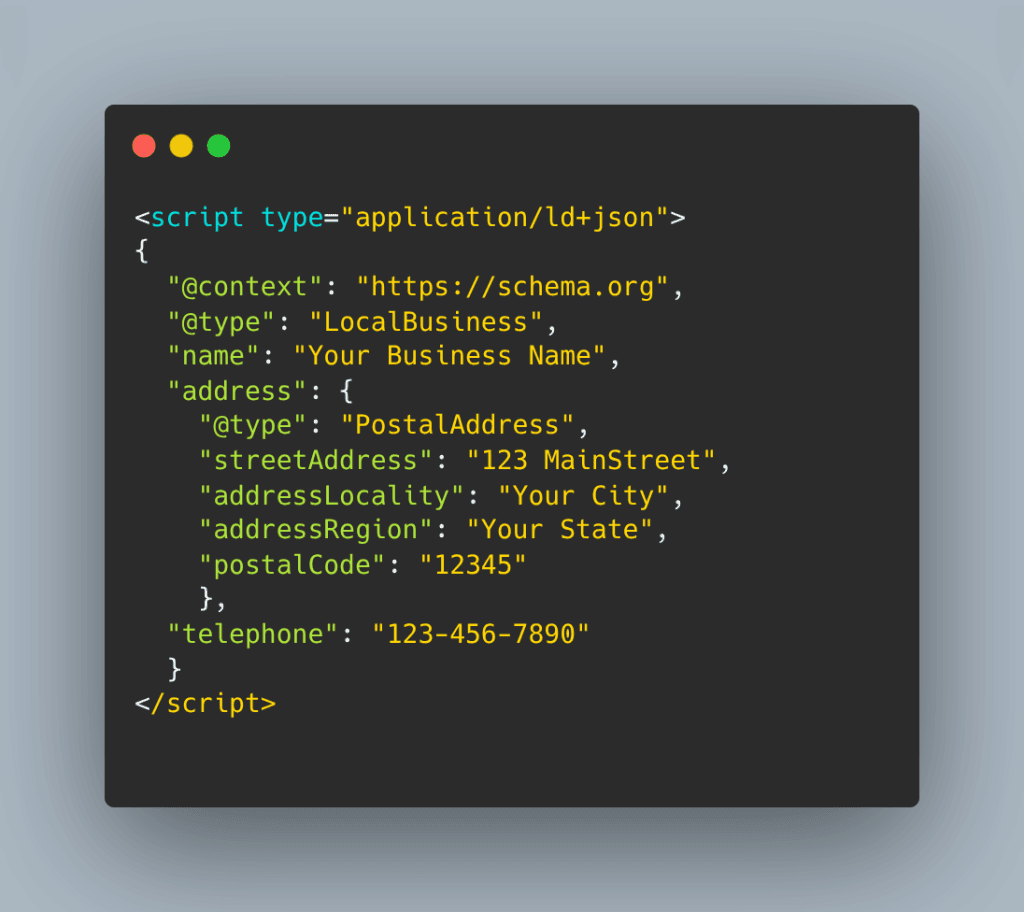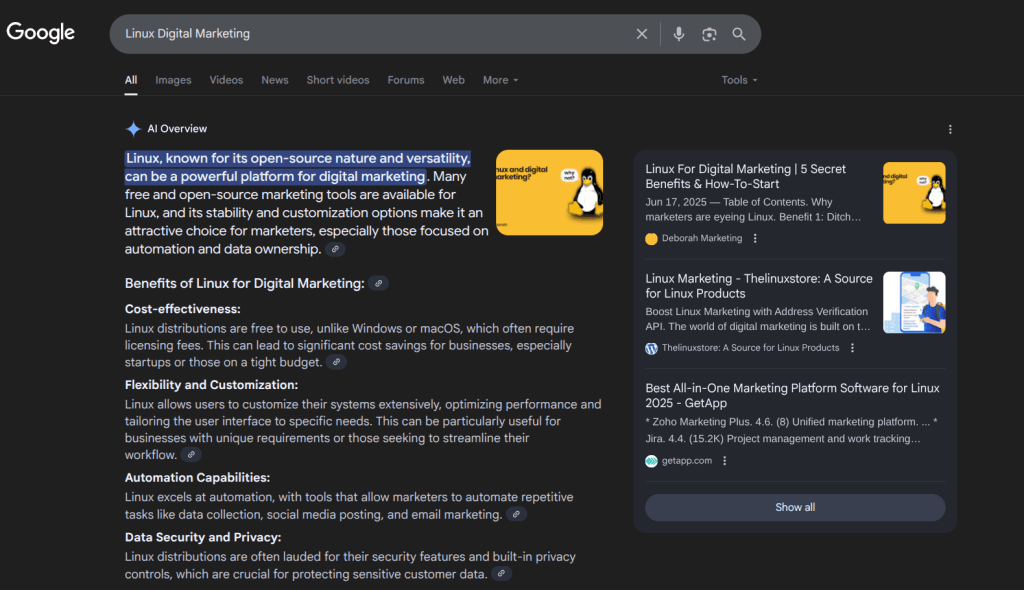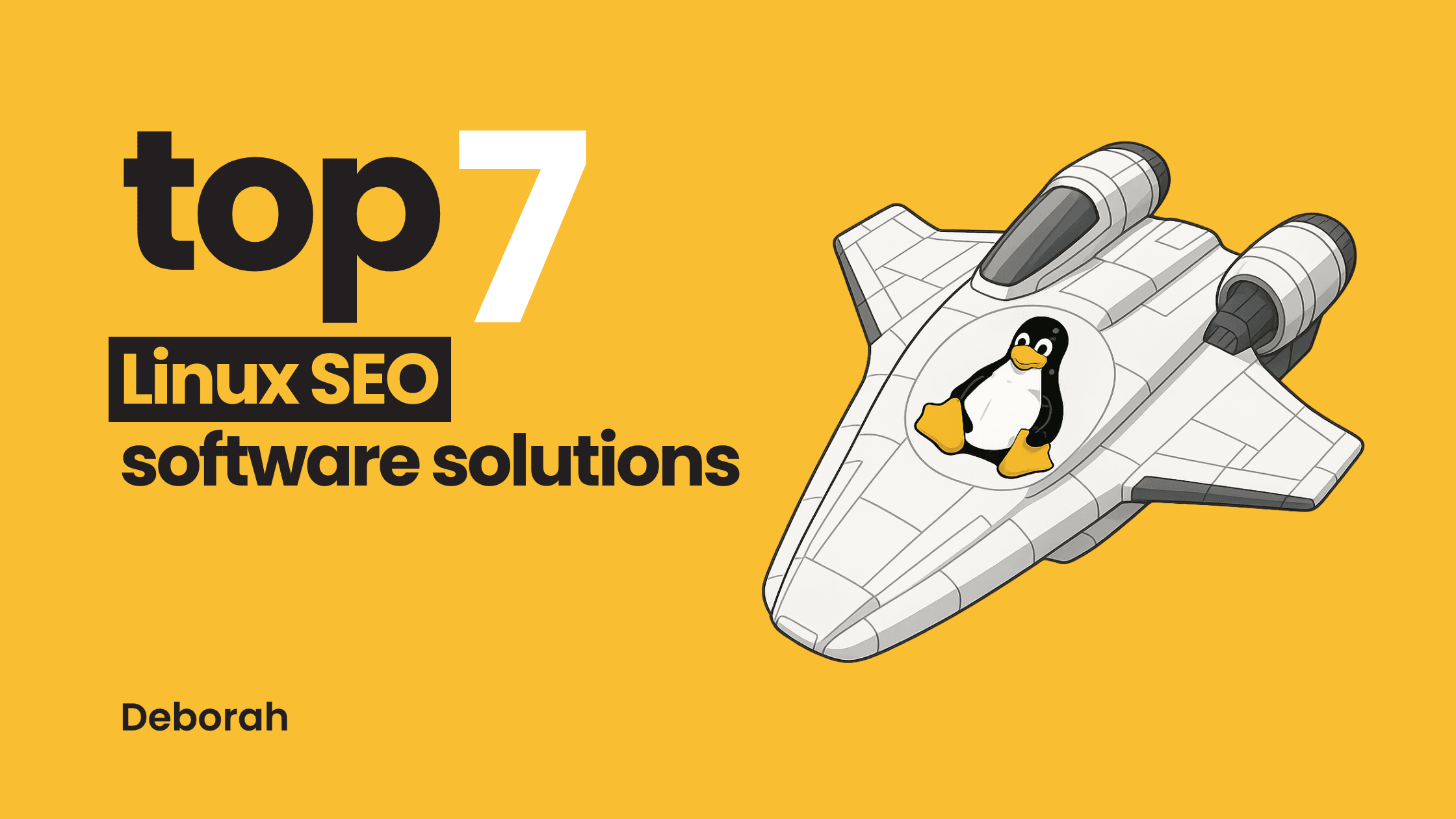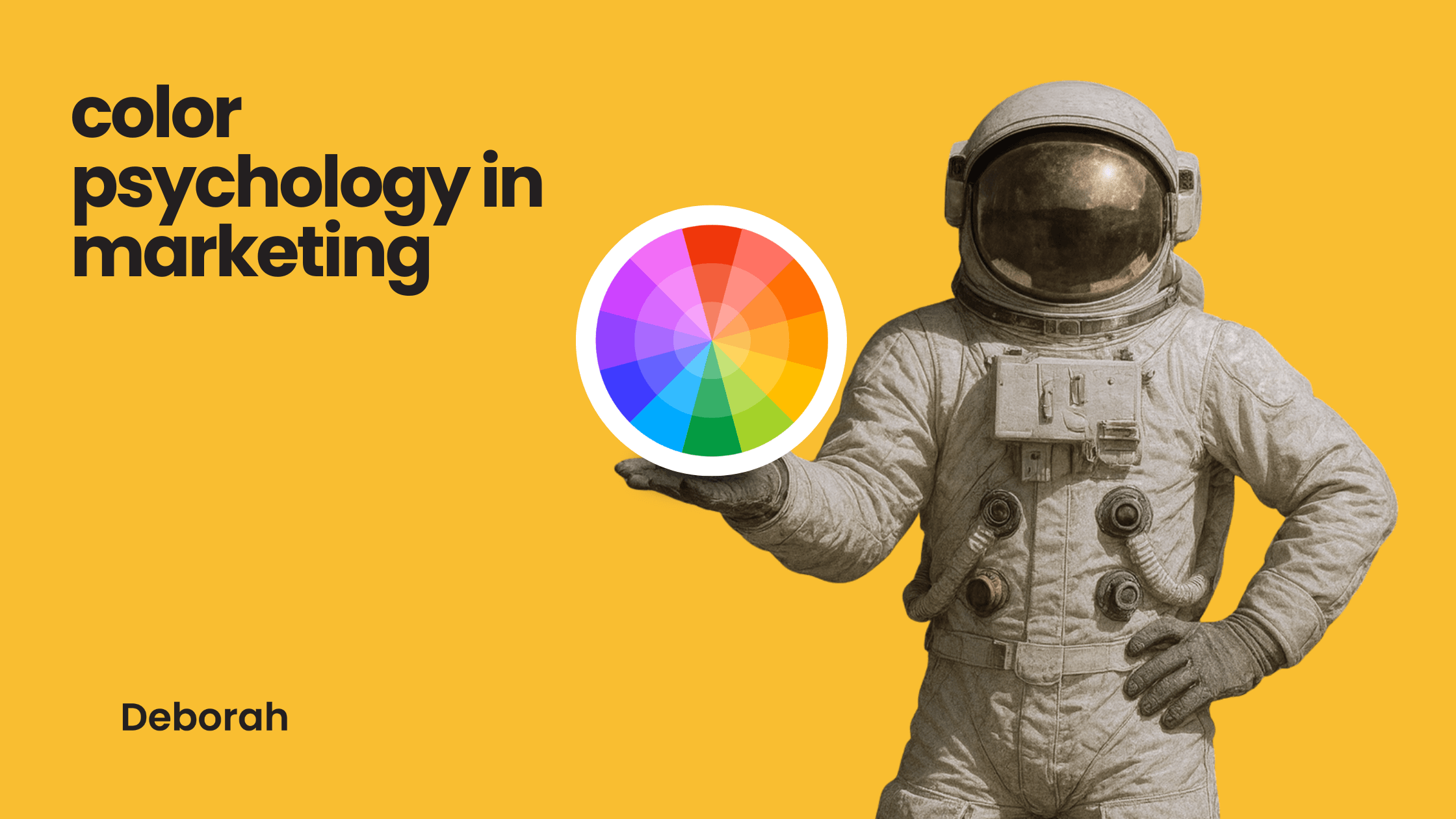- Share on Facebook
- Share on LinkedIn
- Share on Reddit
- Share on X
- Share on Viber
- Share on WhatsApp
- Share on Threads
Table of Contents
Introduction
In discussions of search innovation, Google AI Overviews vs Rich Snippets has become a central comparison for understanding how information appears on results pages. What began with rich snippets has evolved into a new format of AI Overviews. This is Google’s broader push to integrate generative AI into its core products, including Search.
SEO professionals, marketers and publishers need to understand how these formats differ and what their strengths and weaknesses are. Both influence user behavior, content visibility and ultimately website performance.
Rich snippets and AI Overviews represent distinct strategies in how Google delivers information to users.
This blog post examines both systems in depth. We will take a look their mechanics, user experience impact, implications for SEO and broader effects on the visibility of web content. Each section offers a focused analysis to help you understand how search result presentation is evolving and what that means for your strategy going forward.
What are rich snippets?
Rich snippets are special search results that show more details than a regular listing. They give users extra information like star ratings, prices or cooking times directly in the search results. These details help people decide which result to click and make search results more useful and easier to scan.


Examples of rich snippets
Rich snippets come in different forms, depending on the type of content. Common examples include:
- Review snippets show star ratings and how many people left a review. These often appear for products, movies or courses.
- Recipe snippets include things like cooking time, ingredients or calories
- Product snippets display price, availability and ratings for items sold online
- Article snippets show when the article was published, who wrote it and sometimes a small image
- FAQ snippetslist questions and answers that match what people often search for
- There are also rich snippets for videos, events, local businesses and more, depending on the information available
These extra details help users get a quick idea of what a page offers before visiting the site.
How rich snippets are created?
To get rich snippets to show, website owners need to add something called structured data to their pages. This is a type of code that tells Google what the content is about. The most common format is called JSON-LD, and Google recommends using it because it’s simple and doesn’t change how the page looks to users.
NOTE: If you’re using WordPress, this is most often done automatically by plugins like RankMath, Yoast SEO and AIO SEO. Though understanding the code helps.
After the code is added, tools like Google’s Rich Results Test or Search Console can check if everything works. If Google finds the structured data and sees that it matches the page content, it may show a rich snippet in search results.
For users, rich snippets make it easier to find helpful information fast. For example, a person searching for a recipe might prefer to click a result that shows prep time and ratings.
For website owners, rich snippets can lead to more clicks. Research shows that pages with rich snippets often get between 35 and 40 percent more visitors from search compared to regular listings. For example, one recipe website saw a 35 percent increase in clicks after adding structured data. Stores that show ratings and prices in search often see similar results.
Rich snippets give websites a better chance to stand out, especially when many pages compete for the same audience.

What are Google’s AI overviews
Google’s AI Overviews offer a generated summary of search queries directly at the top of search results. This feature was originally introduced as the Search Generative Experience (SGE) in May 2023 and rebranded in May 2024. It now appears when the system determines a generative answer will be helpful, usually for question-oriented queries.
Overviews often appear in a box labeled position zero above organic results and can expand into longer answers via the “Show more” option.

How generative AI in compiles summaries
These summaries are generated using Google Gemini, a custom LLM. Gemini gets information from Google’s indexed website content and related systems such as the Knowledge Graph. It then arranges this information into an answer designed to address a query in full, rather than quoting single passages from blogs or articles. The model creates its own explanatory text, essentially combining data from several sources.
To summarize the difference: Featured snippets directly quote portions of websites, while AI Overviews generate new text informed by multiple references. To keep things as transparent and accurate as possible, Google attaches links to the source pages. This is known as “grounding the content”.
Notable features
Several features define the AI Overview format:
- Citations and source links
The summary gives users visible links beside or within the text, pointing to multiple website sources. They allow readers to verify details or research the topic in depth. - Multi-step reasoning and planning Outputs
These overviews can address complex queries that involve planning or reasoning. For instance, they can suggest day-trip ideas paired with nearby attractions or incorporate meal plans based on preferences - Interactive query refinement tabs
Google now shows query expansion tabs in some overviews. At the top, users can select related sub-queries that refine or extend the original question. Each one generates a new AI Overview when clicked. - Tone and layout consistency
The overview generally uses clear headings, bullet points, or paragraphs structured in a clean style. Visual styling often includes highlighted background sections on desktop or phone interfaces. For sensitive topics (for example health or finance), disclaimers like “AI responses may include mistakes” appear, and users are invited to rate the answer. - Support for video and visual content
In some cases, AI Overviews include embedded elements such as YouTube videos, short-form video clips. This is particularly useful for product or informational queries.
The user experience
How users interact with search results determines which format delivers more value. While both rich snippets and AI Overviews’ goals are to improve information access, they do so in very different ways. The differences in layout and response structure influence how people respond to each format and when one may feel more effective than the other.
Clicking and trust behavior
A study by Pew Research Center showed that when an AI Overview appears, users click fewer regular search results. 8% versus 15% when no AI summary is shown. People also tend to stop searching sooner when they see an AI summary, with 26% ending their search early compared to 16% without it.
Users tend to trust AI Overviews more when they include clear links to sources. In one study with over 12,000 search queries, adding reference links made users more confident in AI answers. However, 42% of users reported seeing wrong or misleading information in AI summaries at least once, and less than 20% often follow the links inside these summaries.

When each format works best
Rich snippets work well for searches where users want quick facts like ratings, prices, or recipes. The clear visuals help users decide fast. AI Overviews work better when users want a full answer or advice on complicated topics like travel plans or health questions. They give a summary instead of a list of links. Trust in AI summaries grows when good sources are shown, but users remain careful with topics where accuracy matters.
In the end, the choice depends on what the user needs. For simple queries, rich snippets offer clear, easy information. For detailed questions, AI Overviews give helpful summaries. Both types can help the search experience but in different ways.
Impact on website traffic
The introduction of AI Overviews in Google Search has notably influenced website traffic. While rich snippets have long been associated with increased click-through rates (CTR), AI Overviews present a different dynamic, often leading to reduced engagement with source websites.
Click-through implications
Rich snippets enhance search results with additional information such as star ratings, prices, or FAQs, making them more appealing and informative. A study by Search Engine Journal found that rich results have an above-average CTR of 58%, compared to 41% for non-rich results, indicating their effectiveness in attracting clicks.
Concerns around content attribution
Rich snippets display information directly from the source website, maintaining clear attribution and encouraging users to visit the site for more details. This direct connection supports both user trust and website traffic.
In contrast, AI Overviews generate summaries by mixing content from multiple sources, which can obscure the original content’s attribution. A report by The Guardian highlighted that some publishers experienced up to an 80% reduction in click-through rates (CTR) due to AI Overviews. This finging raises concerns about the impact on organic traffic and content visibility.
Changes in who controls content display
With AI Overviews, Google controls more of how content is shown in search results. Some publishers report losing nearly half of their clicks when AI Overviews appear. This means sites have less control over how people see their content. To adapt, publishers must focus on creating strong, unique content that works well in both traditional results and AI summaries.
Google is rapidly integrating artificial intelligence into its search results, fundamentally altering how users interact with information online. A recent study by Digital Content Next revealed that AI Overviews in search results have led to a 34.5% decrease in click-through rates for publishers, indicating a significant shift in user behavior .
These AI-generated summaries provide concise answers directly on the search page, reducing the need for users to visit external websites. As a result, traditional SEO strategies, which relied heavily on driving traffic through organic search listings, are becoming less effective. Publishers are now focusing on creating high-quality, authoritative content that can be featured in these AI Overviews to maintain visibility .
Looking ahead, Google’s AI Mode is expected to further transform the search experience by offering more personalized and interactive results. This includes the ability to ask follow-up questions and receive tailored responses, enhancing user engagement and satisfaction.

Key takeaways
- Rich snippets use structured data to add clear, visual information in search results, boosting click-through rates by 20 to 30 percent.
- AI Overviews provide detailed, AI-generated summaries that often reduce clicks to websites but offer quick answers for complex queries.
- Users trust rich snippets for direct, source-based info and prefer AI Overviews when seeking broad or multi-step explanations.
- The rise of AI Overviews shifts some control over content display from publishers to Google, challenging traditional SEO strategies.
- Publishers need to create clear, authoritative, and well-structured content to appear both in rich snippets and AI summaries.
- Google will likely maintain both formats, with rich snippets supporting quick facts and AI Overviews handling in-depth answers.
- The future of search combines AI and traditional results, rewarding quality content optimized for both human readers and AI systems.
FAQ
1. What is the difference between Google AI Overviews and Rich Snippets?
Google AI Overviews provide AI-generated summaries that appear at the top of search results, while Rich Snippets highlight structured data like ratings, prices, and event details directly within listings.
2. Why does Google show Rich Snippets?
Rich Snippets give users quick access to key details such as reviews, pricing, and availability, improving the search experience and encouraging more clicks.
3. How do AI Overviews affect SEO?
AI Overviews can change how users interact with search results. They may reduce clicks to websites if the AI summary provides enough information, so publishers need to adapt strategies to maintain visibility.
4. Can a website appear in both Rich Snippets and AI Overviews?
Yes. If content is well-optimized with structured data and high-quality information, it can be featured in Rich Snippets and also used as a source for AI Overviews.
5. How can I optimize for Rich Snippets?
Adding structured data (schema markup) to your pages helps Google display product details, events, recipes, and reviews as Rich Snippets.
6. How can I optimize for AI Overviews?
Focus on clear, authoritative content that answers user queries directly. Strong topical coverage, accuracy, and credibility increase the chances of being included in AI Overviews.




